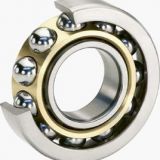Rolling element bearings custom bearing rings cages china supplier
USD $57,600 - $86,720 /Set
Min.Order:1 Set
Quick Details View All >
Dongguan fityou robot automatic co.,ltd
Product Details
A rolling-element bearing, also known as a rolling bearing,[1] is a bearing which carries a load by placing rolling elements (such as balls or rollers) between two bearing rings called races. The relative motion of the races causes the rolling elements to roll with very little rolling resistance and with little sliding.
One of the earliest and best-known rolling-element bearings are sets of logs laid on the ground with a large stone block on top. As the stone is pulled, the logs roll along the ground with little sliding friction. As each log comes out the back, it is moved to the front where the block then rolls on to it. It is possible to imitate such a bearing by placing several pens or pencils on a table and placing an item on top of them. See "bearings" for more on the historical development of bearings.
A rolling element rotary bearing uses a shaft in a much larger hole, and cylinders called "rollers" tightly fill the space between the shaft and hole. As the shaft turns, each roller acts as the logs in the above example. However, since the bearing is round, the rollers never fall out from under the load.
Rolling-element bearings have the advantage of a good tradeoff between cost, size, weight, carrying capacity, durability, accuracy, friction, and so on. Other bearing designs are often better on one specific attribute, but worse in most other attributes, although fluid bearings can sometimes simultaneously outperform on carrying capacity, durability, accuracy, friction, rotation rate and sometimes cost. Only plain bearings are used as widely as rolling-element bearings.
There are five types of rolling elements that are used in rolling-element bearings: balls, cylindrical rollers, spherical rollers, tapered rollers, and needle rollers.
Most rolling-element bearings feature cages. The cages reduce friction, wear, and bind by preventing the elements from rubbing against each other.
Typical rolling-element bearings range in size from 10 mm diameter to a few metres diameter, and have load-carrying capacity from a few tens of grams to many thousands of tonnes.
A particularly common kind of rolling-element bearing is the ball bearing. The bearing has inner and outer races between which balls roll. Each race features a groove usually shaped so the ball fits slightly loose. Thus, in principle, the ball contacts each race across a very narrow area. However, a load on an infinitely small point would cause infinitely high contact pressure. In practice, the ball deforms (flattens) slightly where it contacts each race much as a tire flattens where it contacts the road. The race also yields slightly where each ball presses against it. Thus, the contact between ball and race is of finite size and has finite pressure. Note also that the deformed ball and race do not roll entirely smoothly because different parts of the ball are moving at different speeds as it rolls. Thus, there are opposing forces and sliding motions at each ball/race contact. Overall, these cause bearing drag.
Roller bearingsRoller bearings are the earliest known type of rolling-element-bearing, dating back to at least 40 BC. Common roller bearings use cylinders of slightly greater length than diameter. Roller bearings typically have higher radial load capacity than ball bearings, but a lower capacity and higher friction under axial loads. If the inner and outer races are misaligned, the bearing capacity often drops quickly compared to either a ball bearing or a spherical roller bearing.
As in all radial bearings, the outer load is continuously re-distributed among the rollers. Often, only less than half of the total number of rollers carries a significant portion of the load at all time. The animation on the right shows how a static radial load is supported by the bearing rollers as the inner ring rotates.
Contact Supplier

You May Like






New Products
Popular Searches
Recommended Products
Find Similar Products By Category